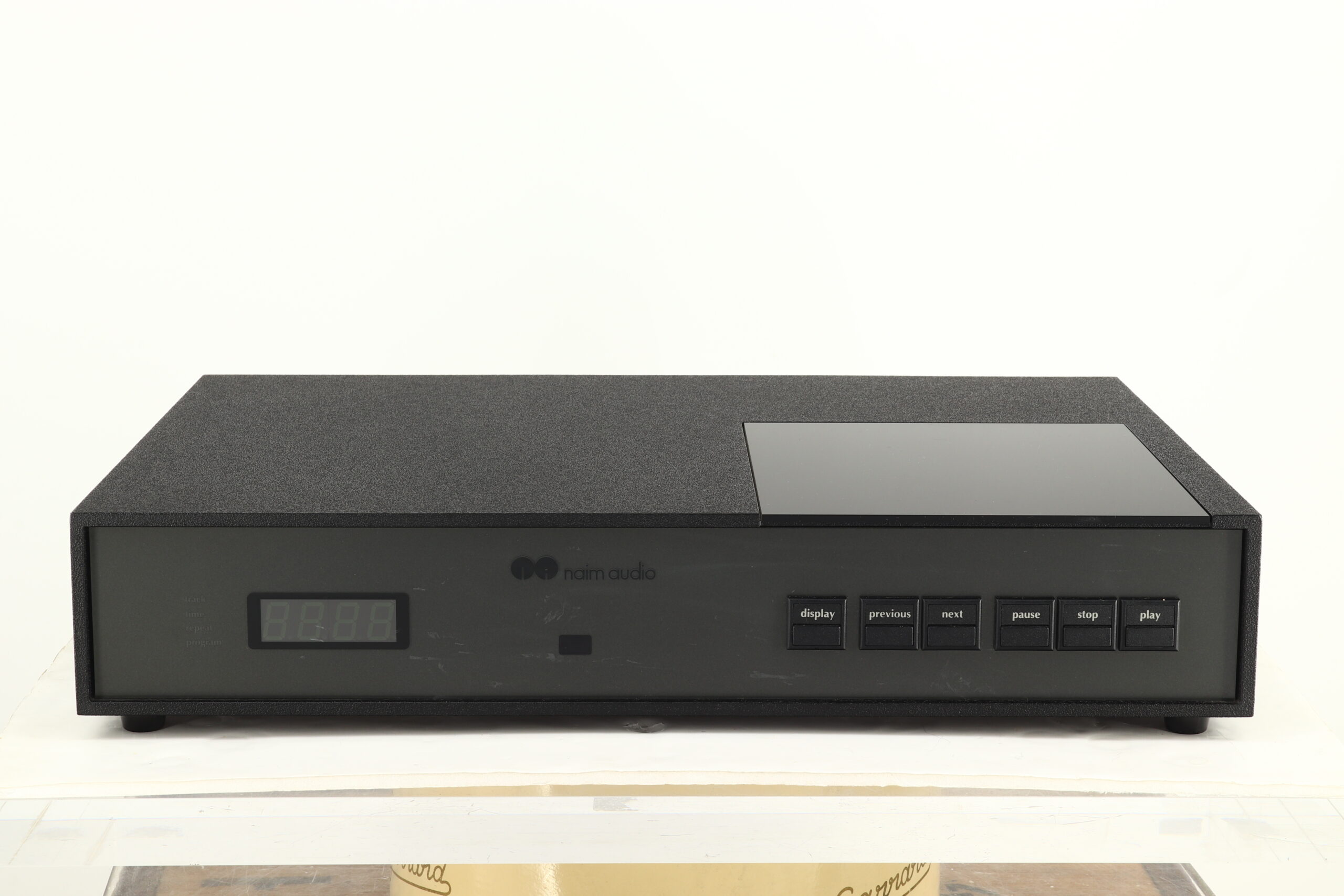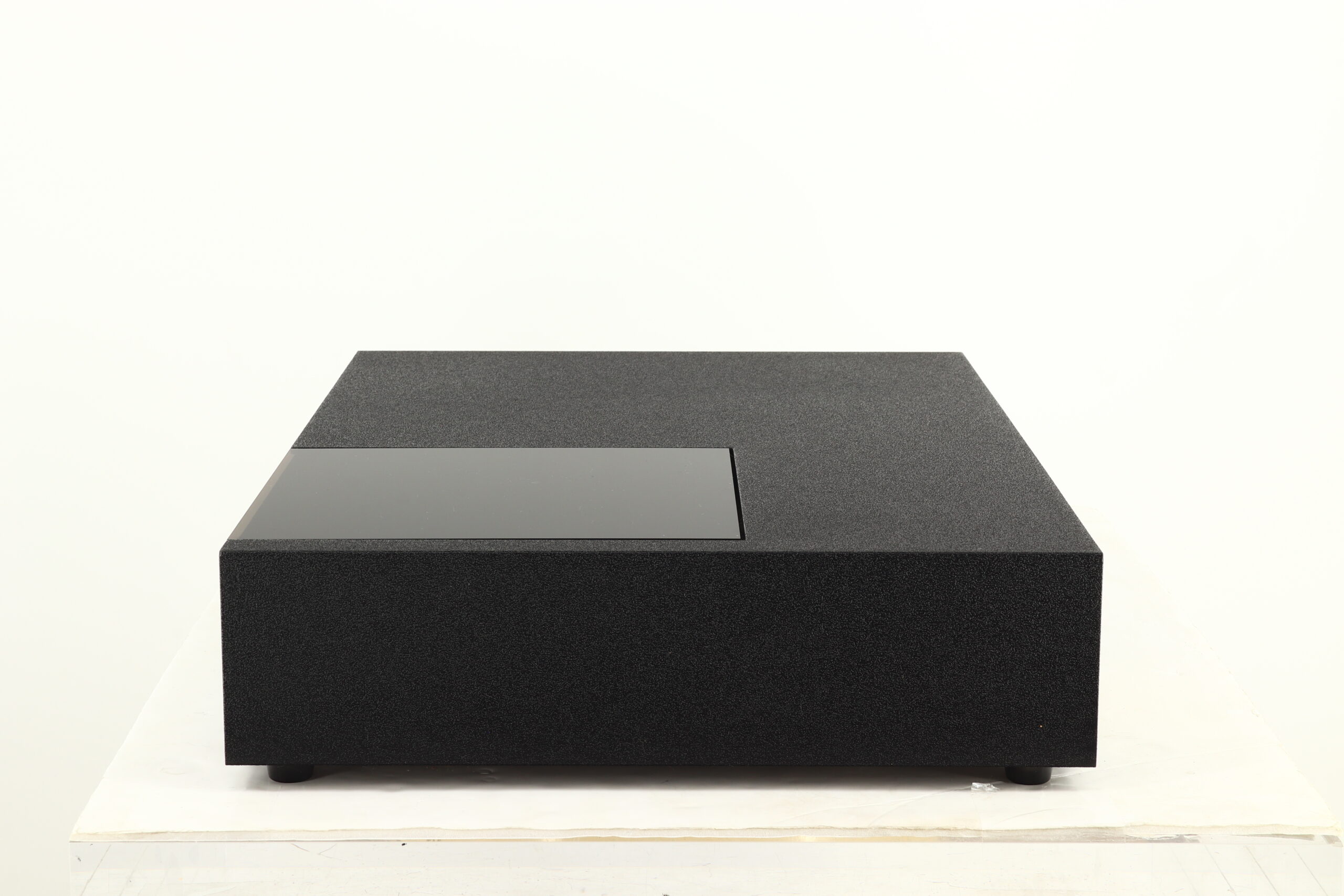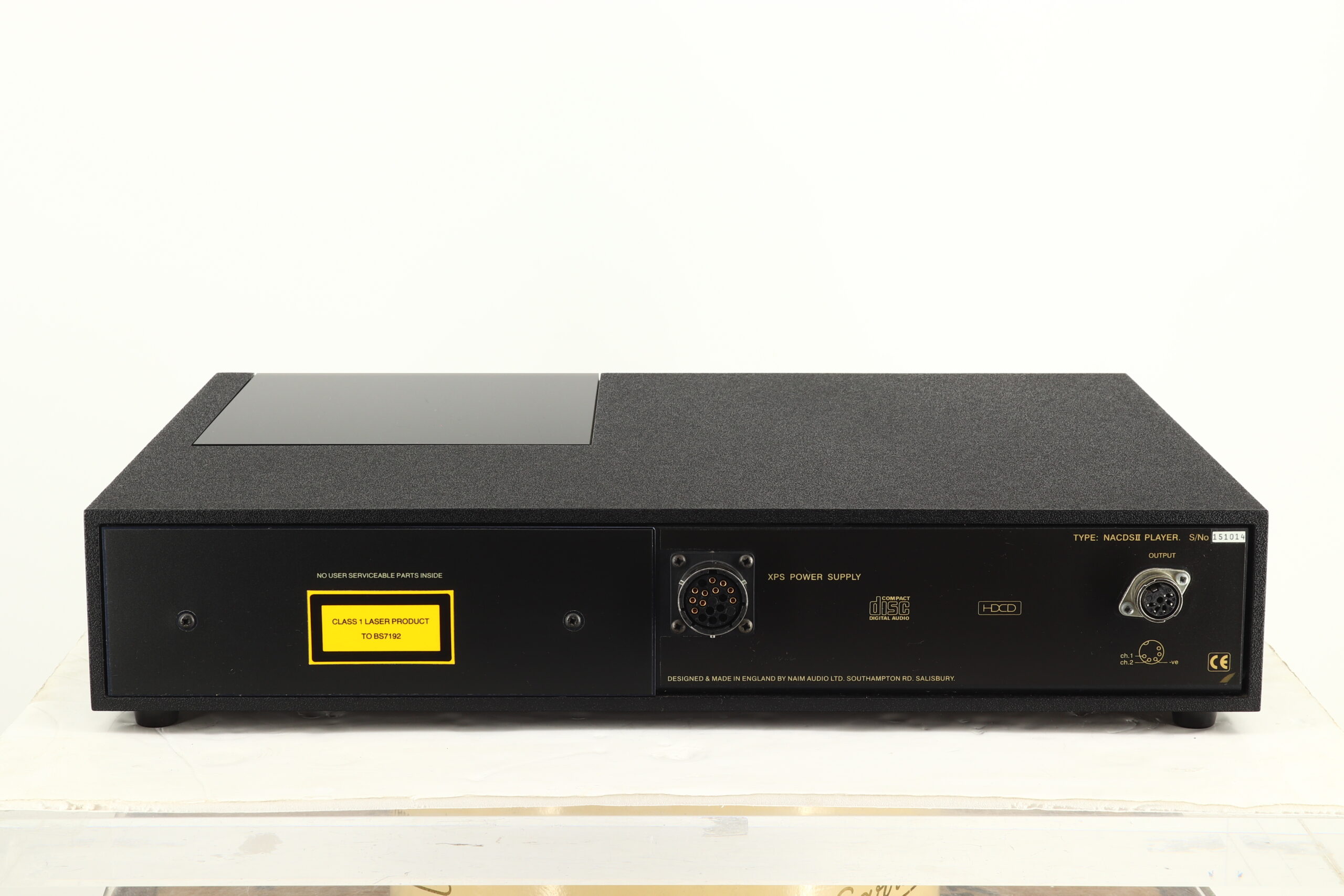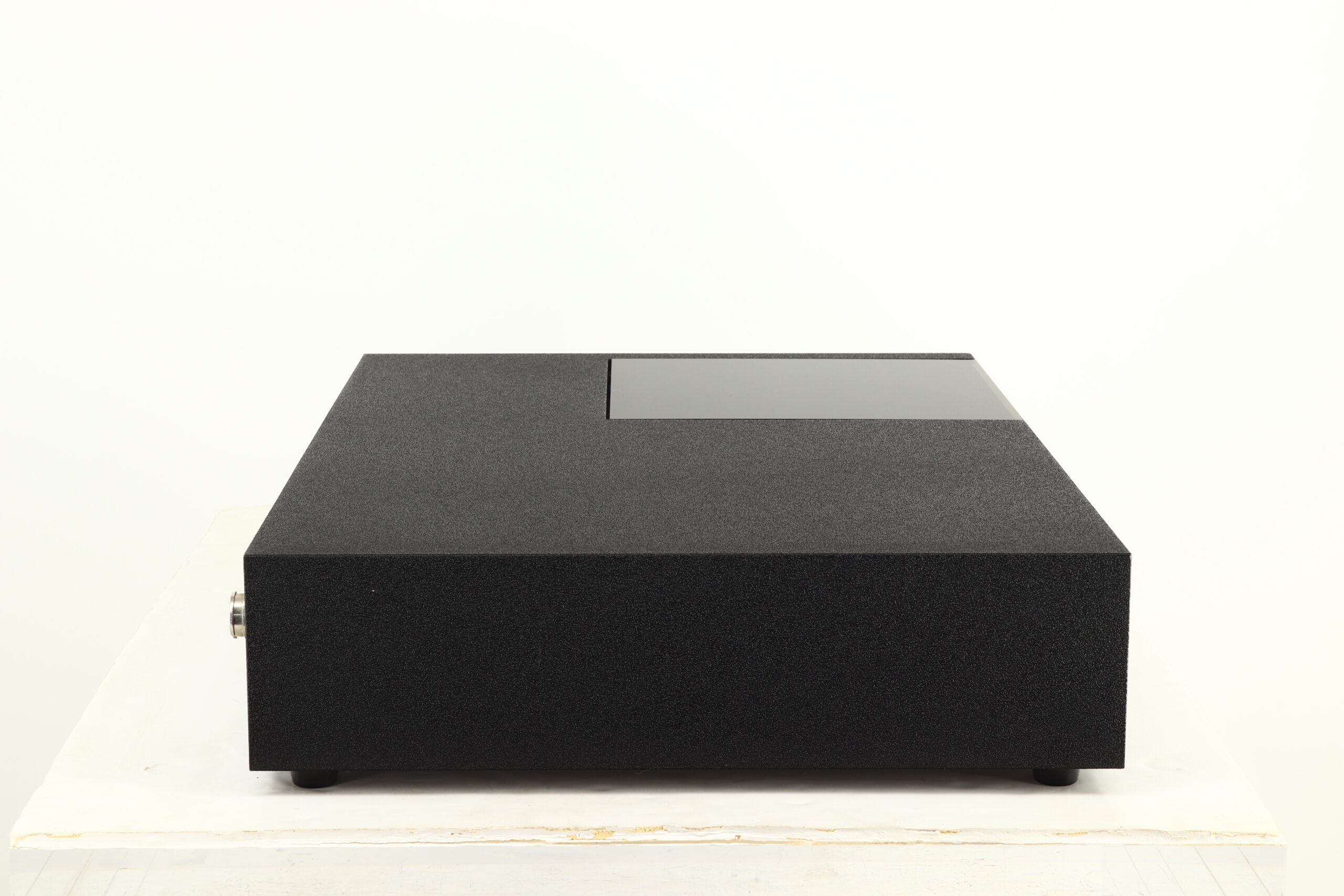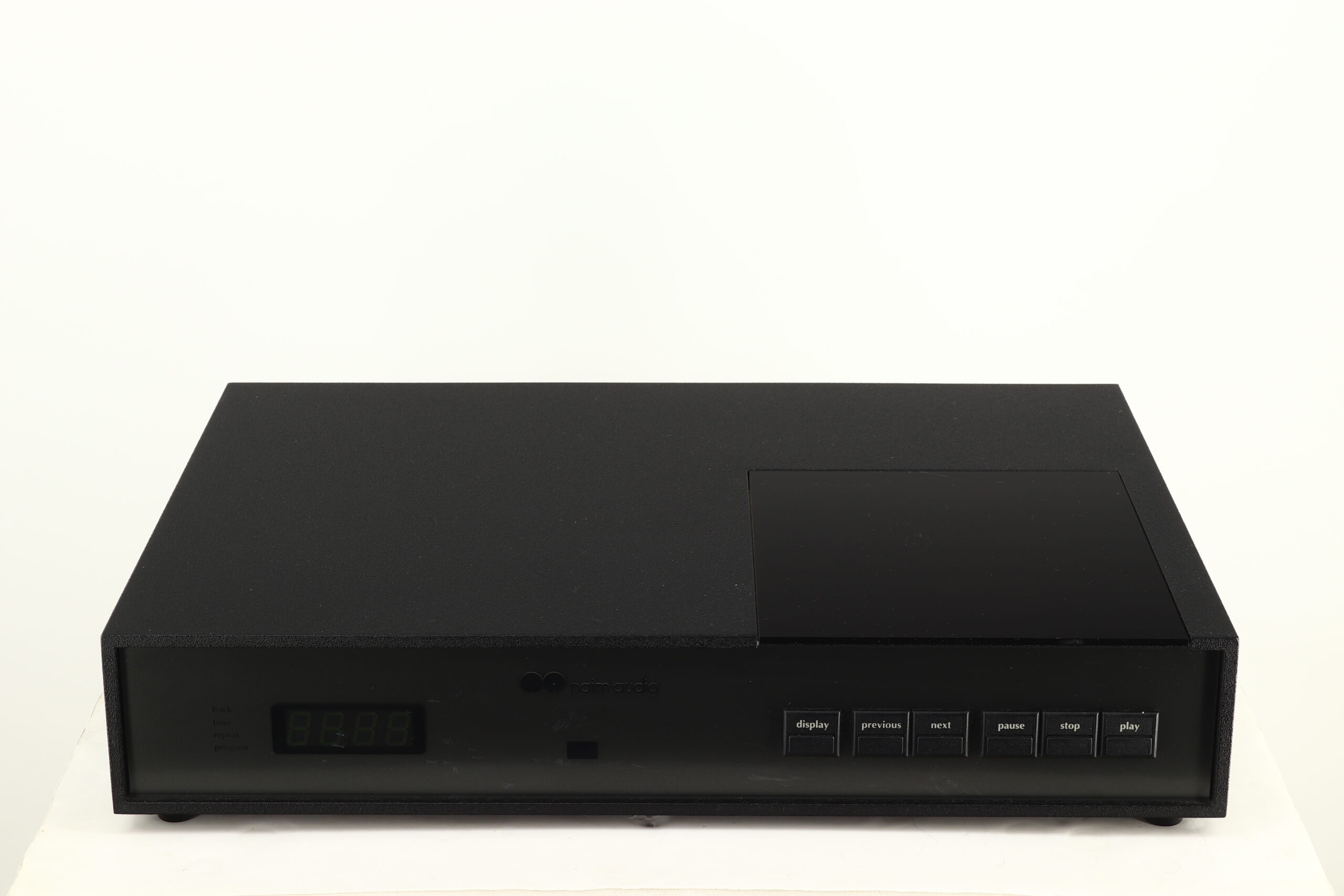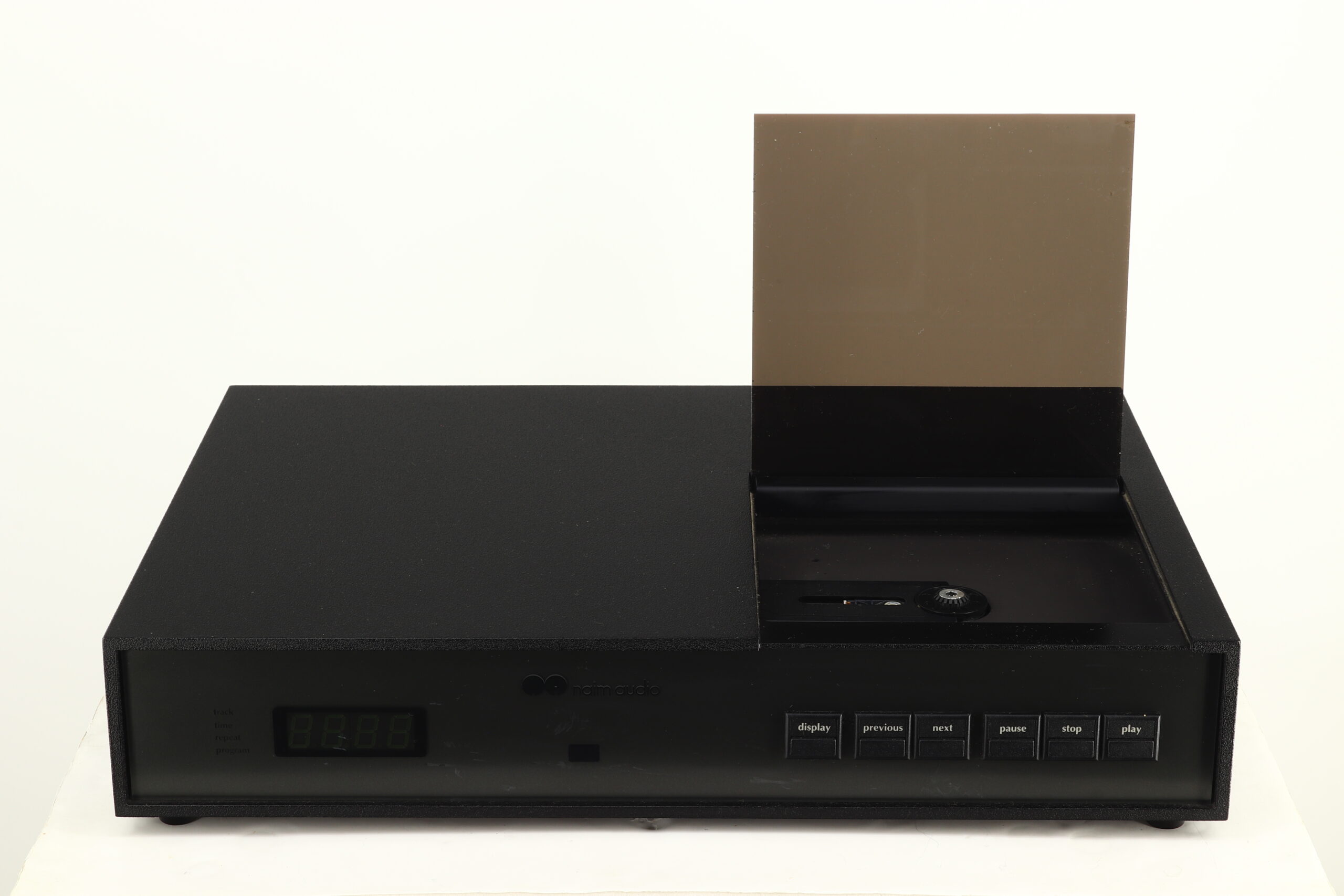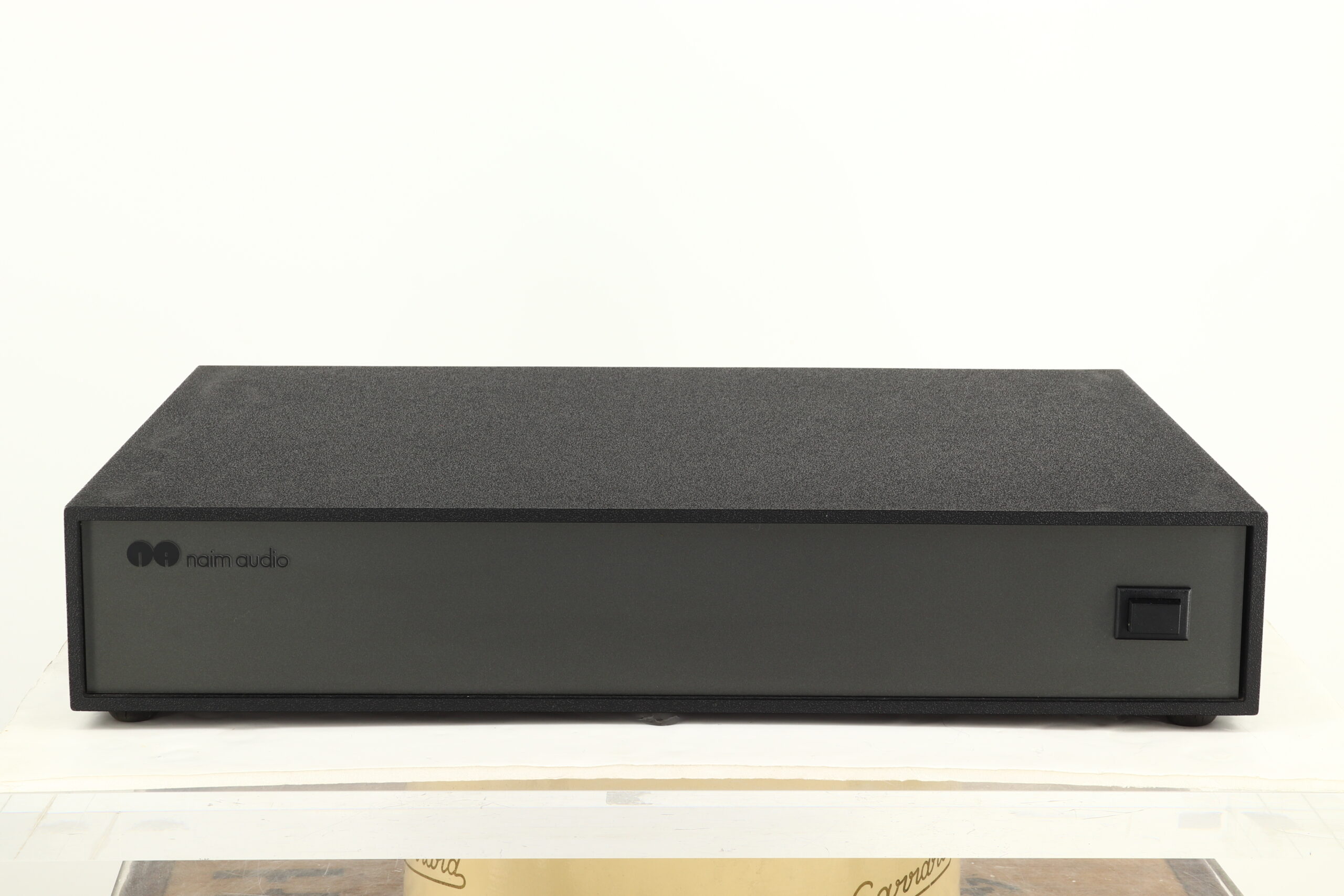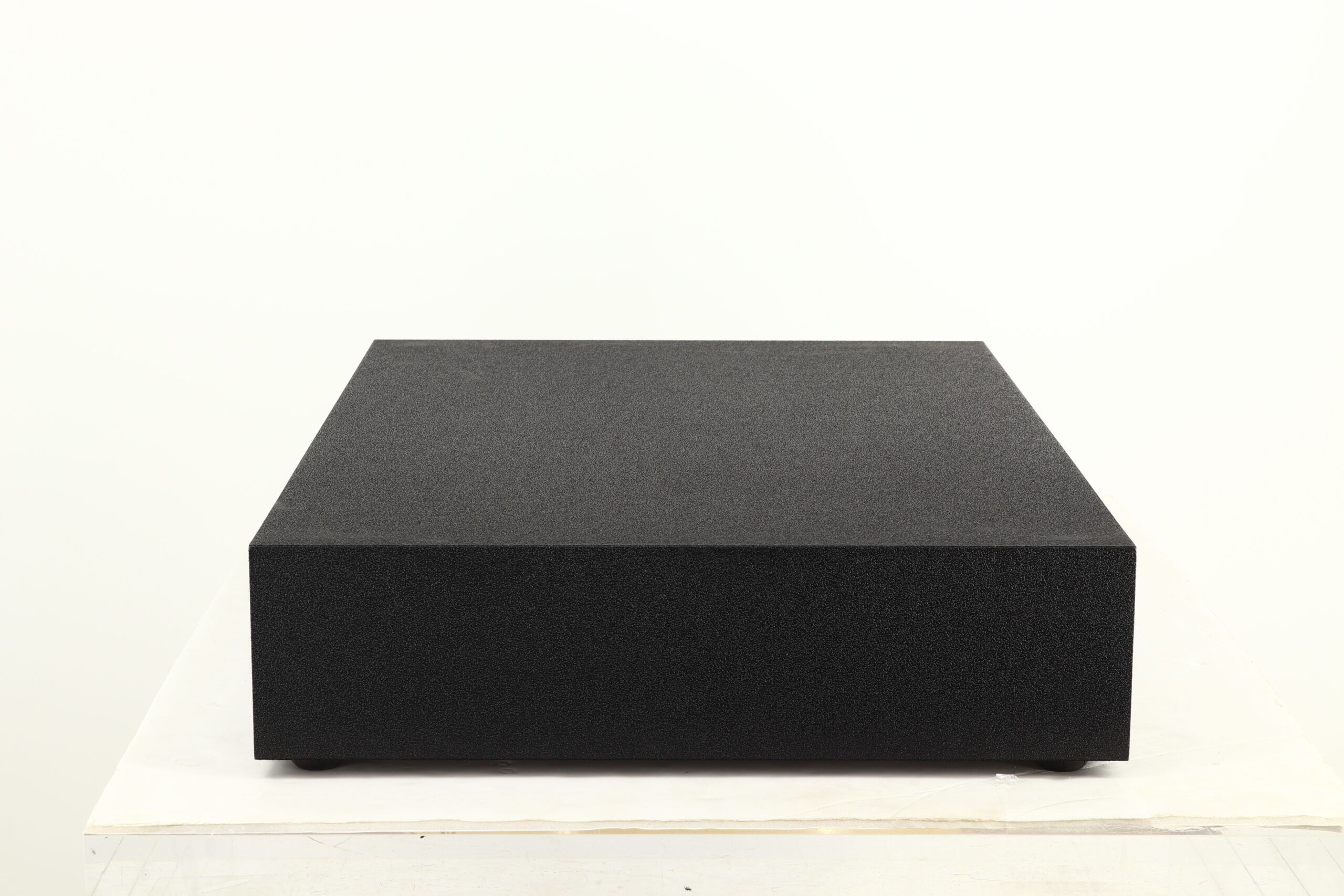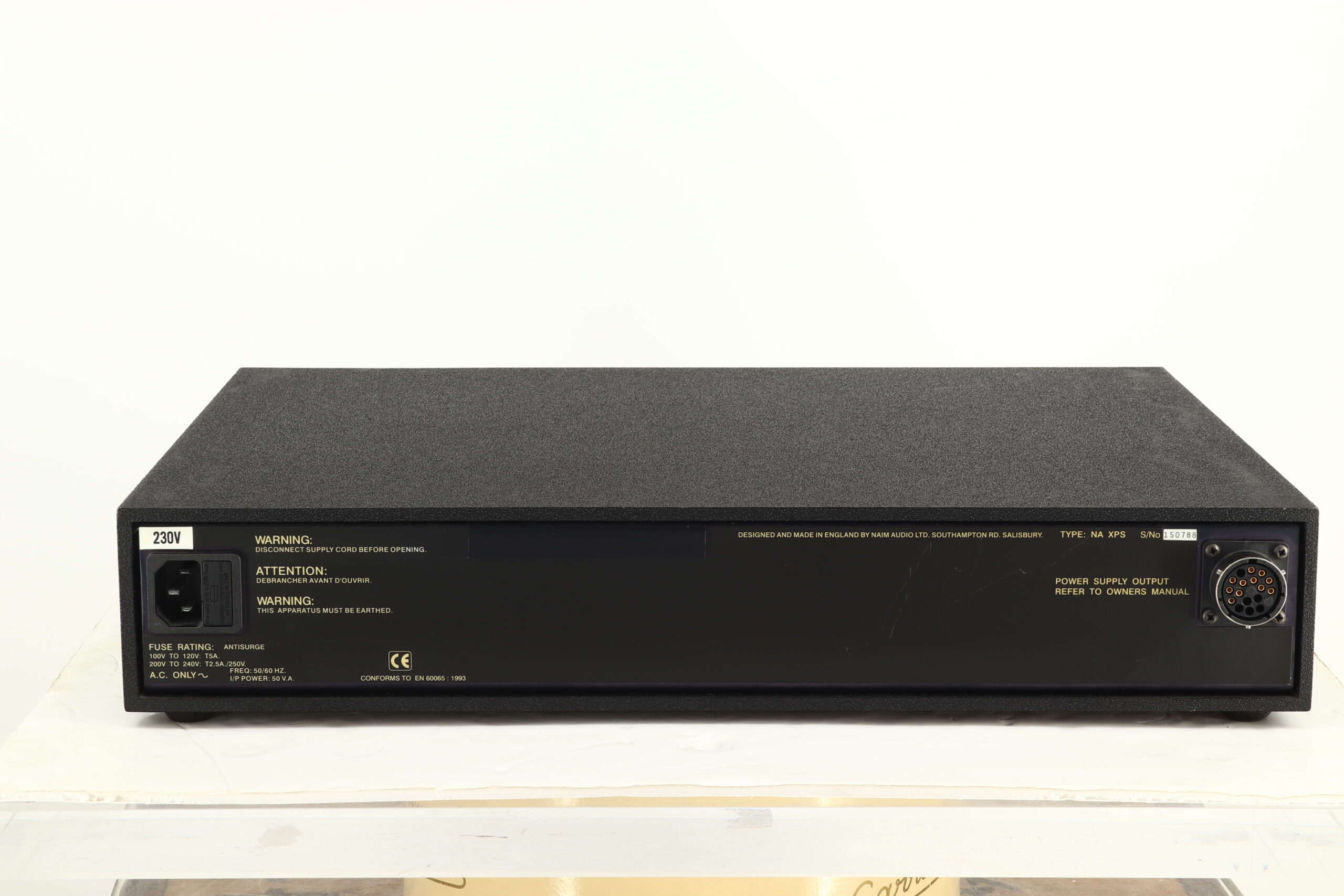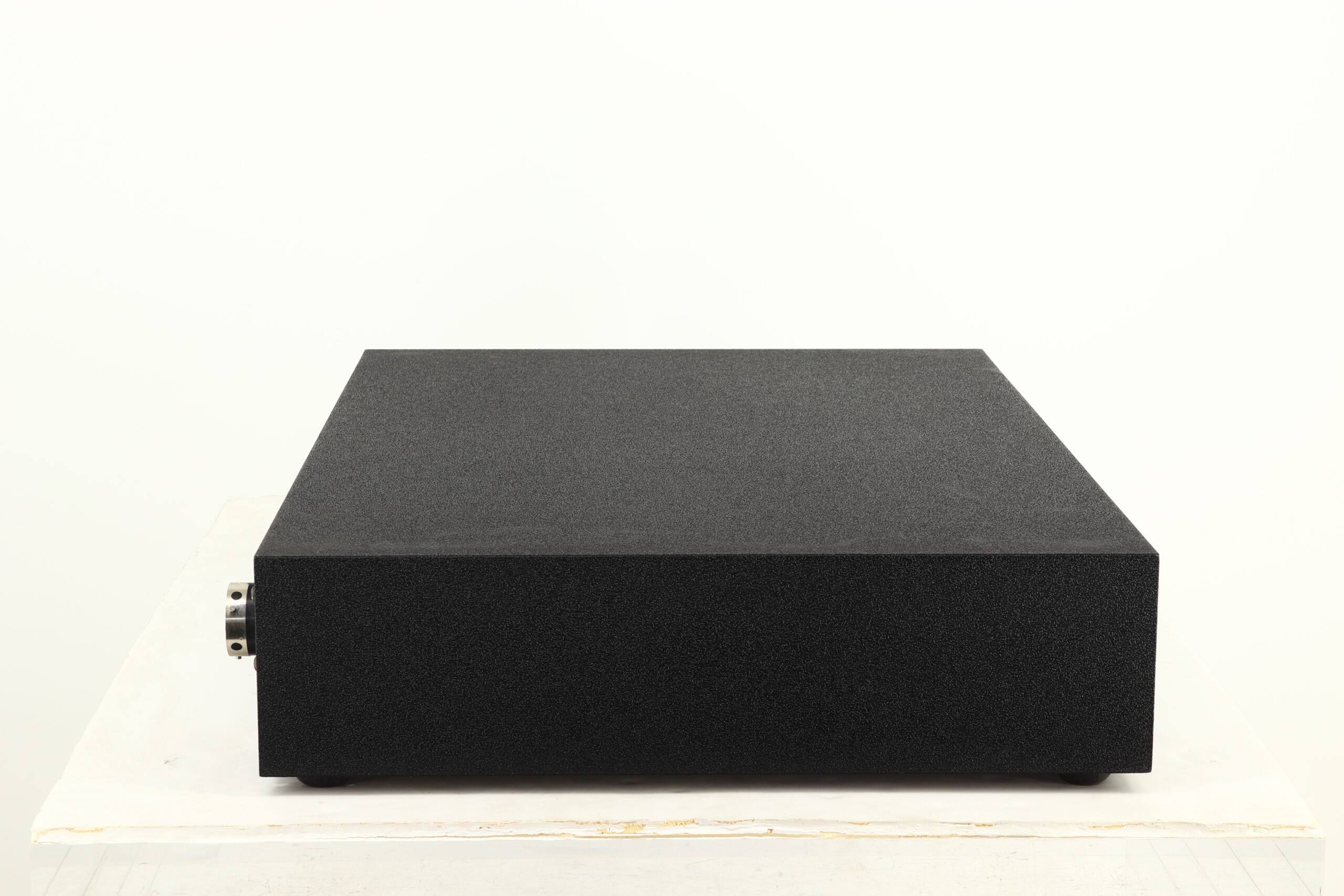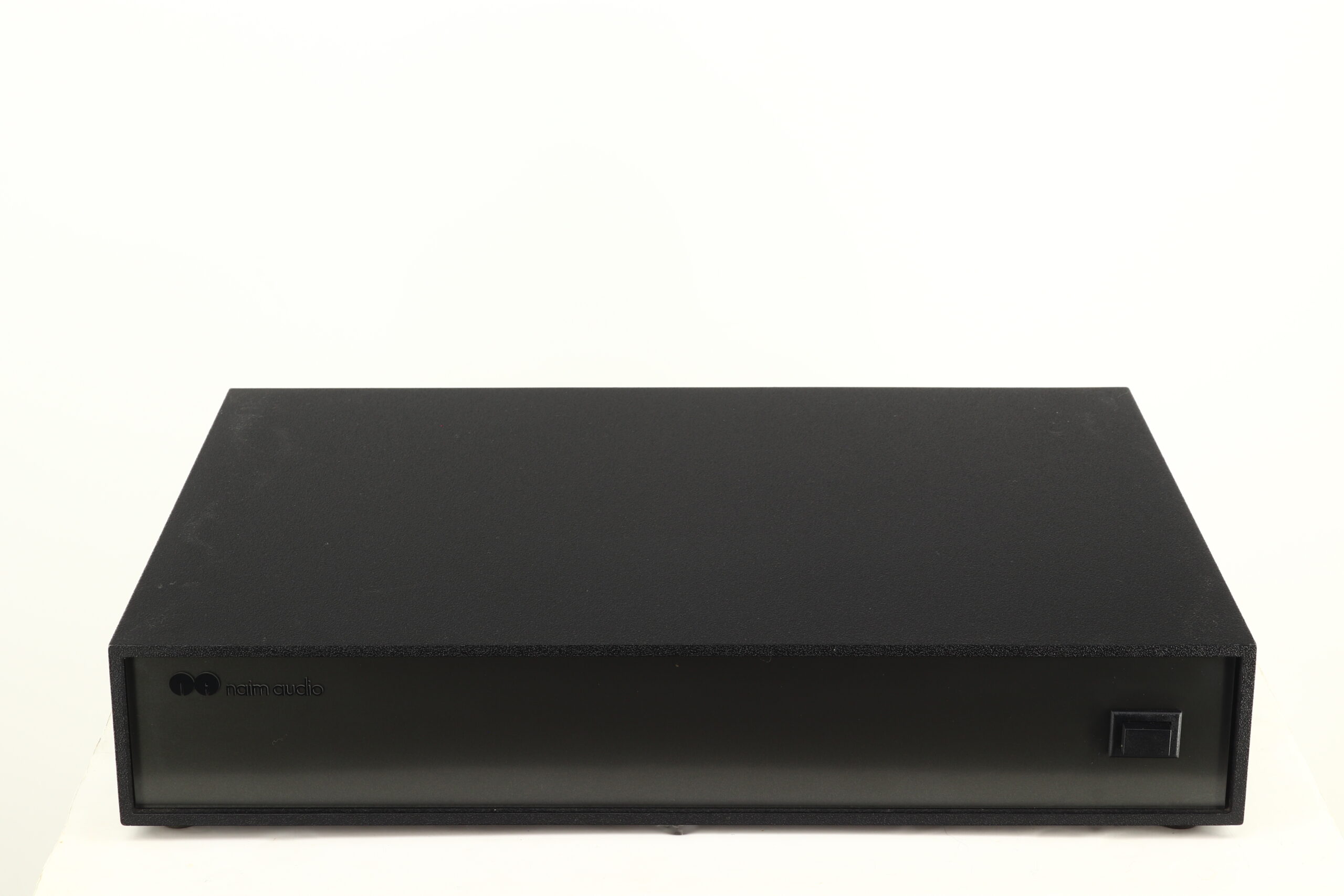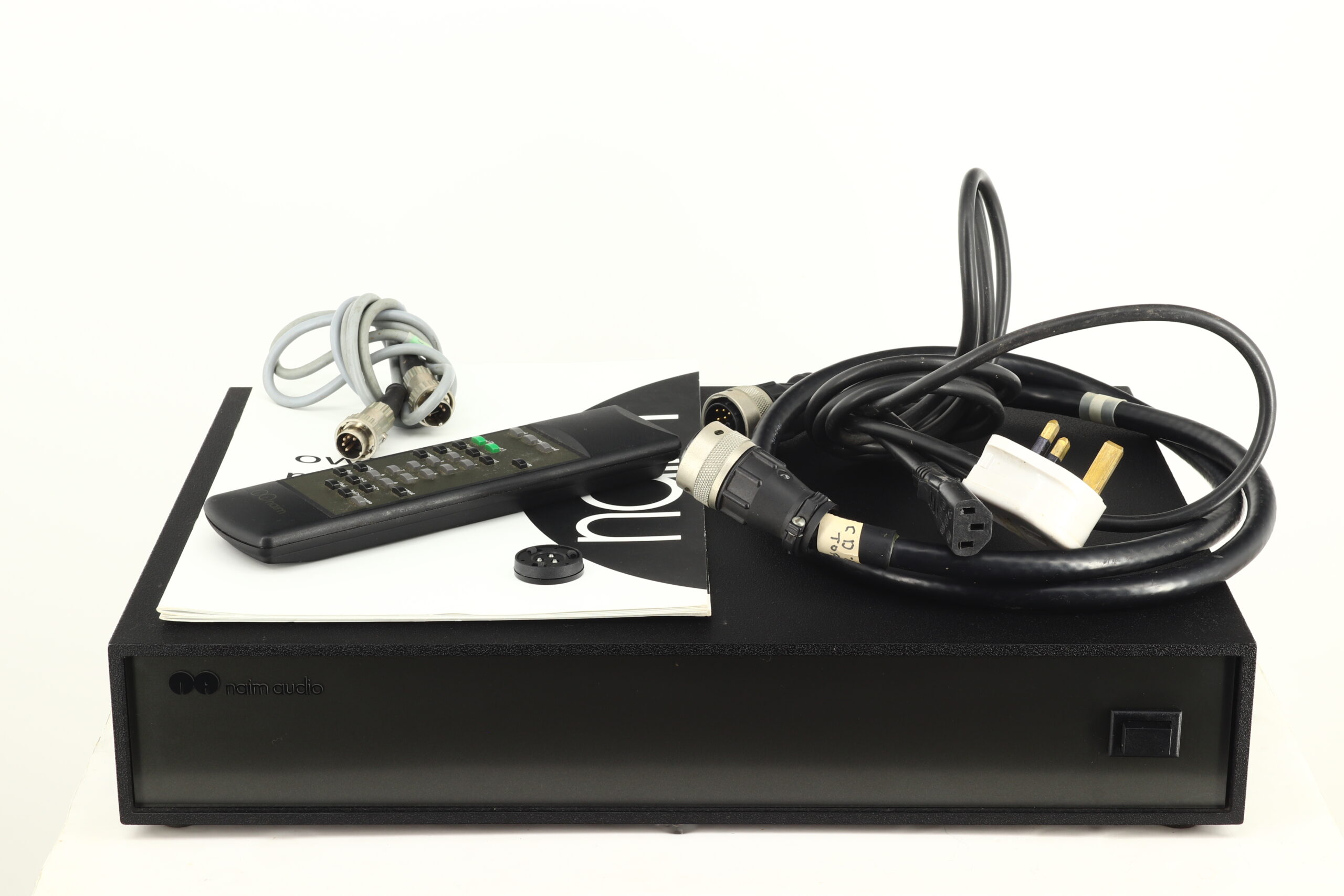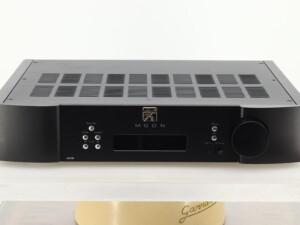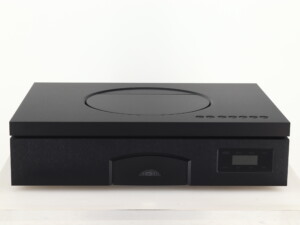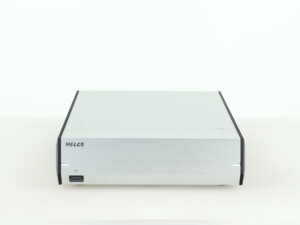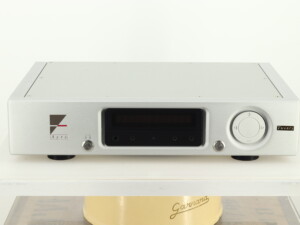Naim CDS2 CD Player / XPS Power Supply (1999)
£1,649.00
Manufacturer : Naim
Model : CDS2 / XPS
Serial Number : 151014/150788
Packaging : N/A
Accessories Included : Mains Cable / Manuals / Burndy Cable / Remote / CD Puck / 5-Pin SNAIC
Price When New :
Out of stock
Description
In 1991 vinyl stalwarts Naim Audio decided to produce its first compact disc player, but like so many Naim products, the design was rather unusual. They came in a two-box configuration, but instead of a CD transport and separate DAC, Naim decided to put the two together in one box and gave the power supply for both its own separate enclosure. They also made it a top loading player and the CD clamp used a rare earth magnet to keep its mass low whilst still firmly holding the disc without vibration. All of this work did produce one of the most “analogue” sounding CD players of its time, and it is still revered by many today. Our examples are finished in Naim’s usual distinctive “Olive” casework and are in good condition with just a few minor cosmetic marks – please see photographs. Both units will be professionally packaged and come with remote control, manual, burndy cable, mains cable, SNAIC interconnect cable, CD puck, plus our standard three month warranty.
Naim Say….
Here we introduce Naim’s head of Research and Design, Roy George, who writes about one of his most interesting and demanding projects since joining Naim in 1985.
“It was with great excitement born of hopeful anticipation that it would be better than the original CDS and that listening to a stereo system would become an even more fantastic experience. There was also a slight trepidation arising from the possibility of failing to reach our own high standards ; the CDS II had to be better.
CD players are extraordinarily complex pieces of equipment. The CDS II includes computer controlled servo control systems, motors and motor drive electronics, sophisticated digital electronics, leading edge analogue electronics, very low noise power supplies and complex mechanical parts. The performance of the CDS II mot only depended on achieving the best from each part but also ensuring that each part did not interact with any other by any means: earthing, power supplies, electric fields, magnetic fields, vibration or temperature. Detailed design consideration must be given to every part for success.
Putting values to some of the workings of a CD player indicates the engineering required. The transport laser is continuously focused on a moving row of tiny pits to accuracies exceeding one micron (a millionth of a metre). After error correction perfect data is retrieved from the disc at a rate of 1.4 million bits per second. Digital data timing errors of one picosecond (a million-millionth of a second) are audible. The smallest controllable change in current output from the digital-to-analogue converters (DACS) is two nanoamps (thousand-millionths of an amp).
One of the main enemies of good CD player performance is jitter – small errors in digital timing repeatability, which after digital-to-analogue conversion translate directly into amplitude distortions of a particularly unmusical nature. Many of the design initiatives in the CDS II are to reduce jitter to inaudible levels. The analogue parts of the CDS II use new topology, discrete circuitry and there are no operational amplifiers in the signal path.
Our design process consists of concept design, electronic and mechanical computer aided design (CAD) work, prototyping, extensive measurement, exhaustive listening and repeats of some or all of these. The finished reference prototype CDS II was ready in July, and it seriously impressed everyone who heard it. Production versions sound significantly better. Now all the hard work is done, can we be satisfied that the CDS II sets new state-of-the-art standards for CD music reproduction? Yes, absolutely.
The CDS II is an integrated CD player (Transport and DACs in the same box) which needs an external power supply, the XPS. The digital filter, de-jitter circuit and DACs are very closely positioned on the printed circuit board to minimise critical digital clock and data track lengths, hence reducing jitter. Naim have never designed a CD player with separate transport and DAC boxes because we have always understood that the SPDIF digital data link between the two introduces unacceptable levels of jitter.
Previous Naim CD players have used operational amplifiers for current to voltage conversion (following the DACs) and output filter stages, but the op-amps have been replaced by new discrete circuitry (using transistors, resistors, and capacitors) in the CDS II. Though much more expensive to produce, our discrete circuits have a wider bandwidth, lower distortion, and more benign power supply requirement than the equivalent high quality op-amps. The analogue output filters are seven pole, linear phase alignments which remove any residual high frequency spuriae from the player outputs, benefitting the input stages of the following preamplifier. The CDS II outputs are de-coupled, a servo system being used to maintain the quiescent output voltage at zero.
The potential of the ideas and high specification components in the CDS II have been realised because of meticulous attention to design details. Printed circuit board layout, power supply design, earth plane geometry and earth current routing, mechanical and thermal considerations, etc. have all made an enormous contribution to the final performance. Nearly all of the forty-one power supplies are triple regulated (the others are double regulated). All analogue and, as importantly, digital supplies have the lowest possible noise modulation. To this end the mains transformer, rectifiers, reservoir capacitors and the first voltage regulators are in a separate power supply box, the XPS. Analogue supplies are kept completely separate from digital supplies right back to the mains source. External and internally generated mechanical vibrations are isolated from printed circuit board assemblies by mounting them on a highly refined sub-chassis and spring suspension system.
Specifications:
Frequency Response: 10Hz – 20kHz (± 0.1dB)
Output Level: 2.0V rms at 1kHz
Output Impedance: 50 Ohms nominal
Phase Response: Linear phase, absolute phase correct
De-emphasis ± 0.1dB referred to main response
Distortion and Noise: <0.1% (10Hz – 18kHz at full level)
Laser Type: Semiconductor AiGaAs
Wavelength: 70nm
Mains supply: 110V, 115V, 230V (50 or 60 Hz)
Case dimensions: 430 (W) x 300 (D) x 76 (H) mm (x2)

